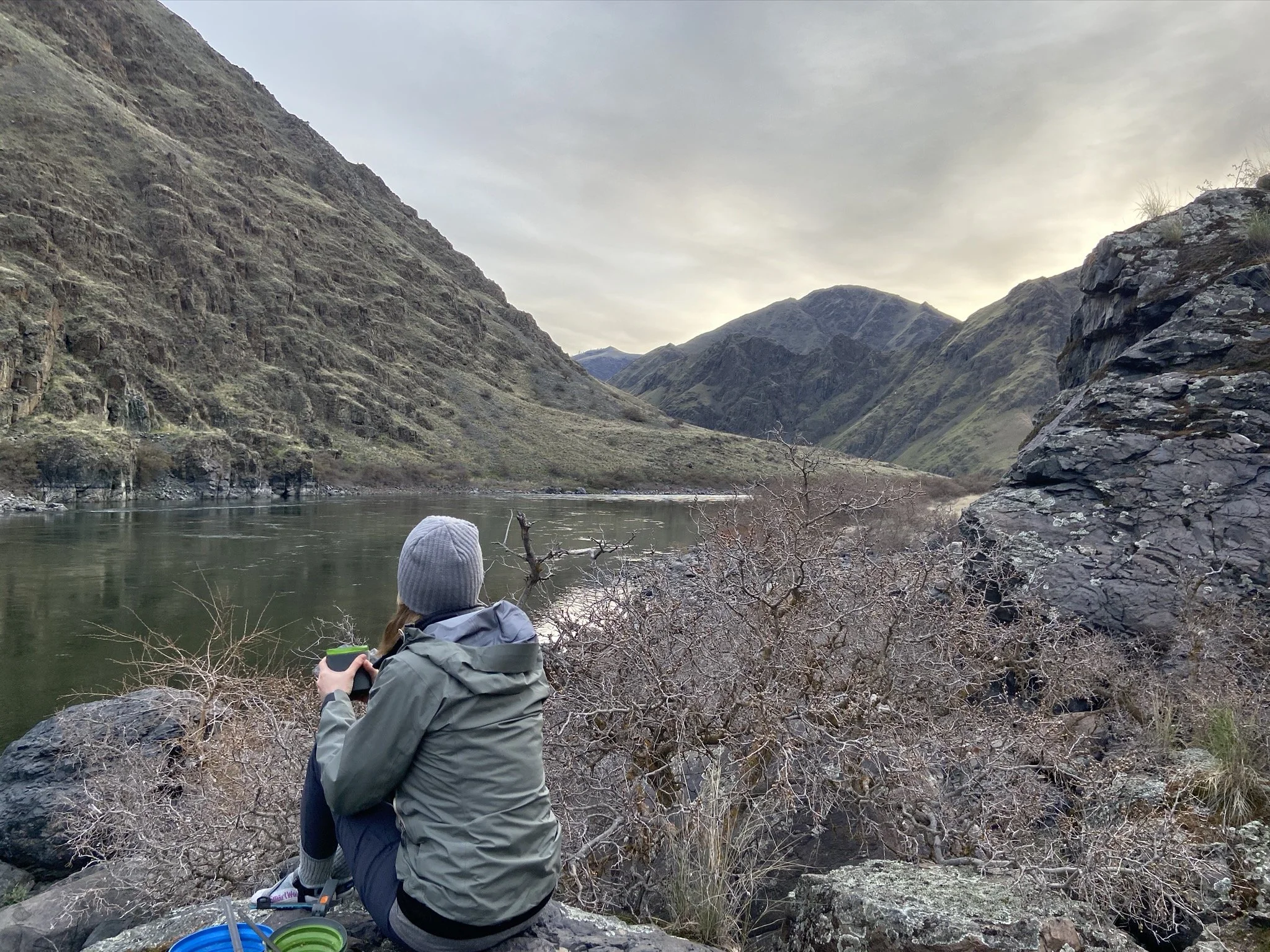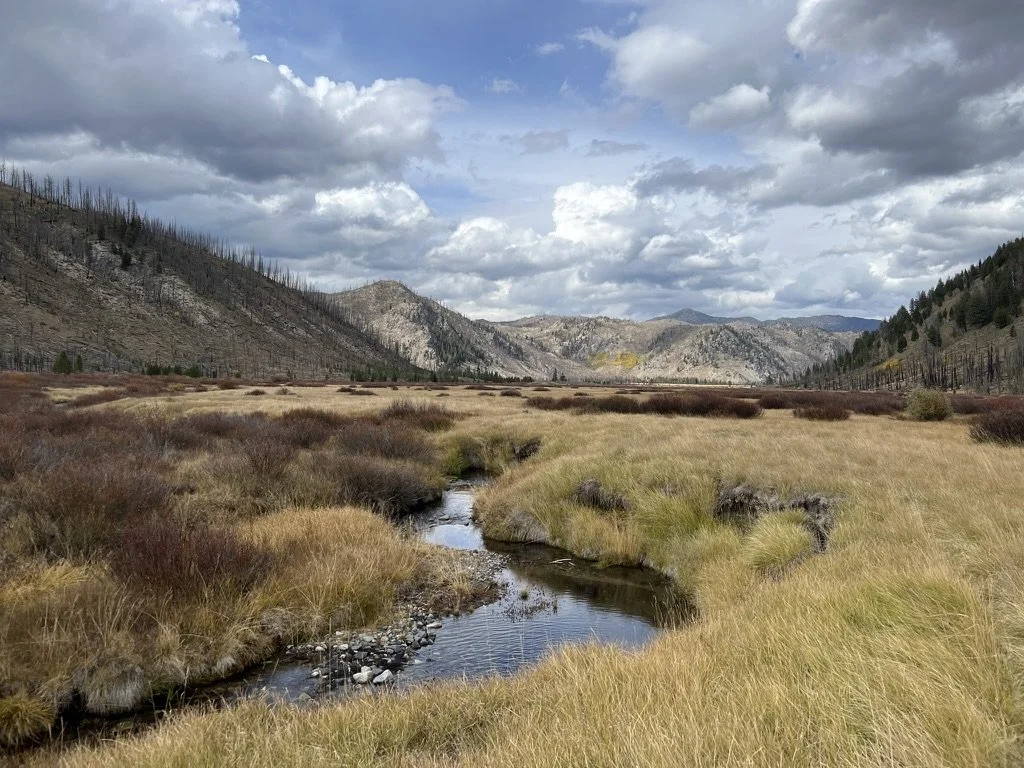What's Cooking? The Best Backcountry Meal Plan
I have spent an unusual amount of time thinking about my food intake and set up for backcountry hunts. My focus today will be on those situations when you’re planning on carrying all that you have with you on your back, as your constraints significantly lift if you’re able to execute a hunt with a base camp which allows for certain delicacies to come along with you in terms of nutrition and sustenance. My system is not perfect, it’s still the one aspect of my backcountry hunting game that I continually tinker with and talk to others about, but what I am about to share is where I have landed after 5 plus years of experimentation.
Food Principles
There are three key principles that I like my food system to adhere to when I go on a backcountry adventure.
Volume reduces with consumption
Avoid the post meal crash
Minimize water requirements
Let’s dive into a little more detail on each of these principles first, and then I will just spell out what my backcountry menu looks like today.
Mass and Volume must decrease with consumption
This was a lesson that I learned on my very first backcountry hunt. Eager to get myself into the backcountry, I elected to just throw in a full loaf of bread, a plastic jar of Peanut Butter and a plastic tube of honey. What I didn’t think about is that as the days passed, and I knocked out a few lunch meals, that as I went to pack my bag up after eating that the Peanut Butter and honey containers kept the same amount of real estate in my bag. This might seem trivial, but I find it important that as the days pass and you’re consuming your food that you should also start gaining some space in your bag.
The best case scenario is that you will be leaving with a heavier pack and more volume than you came in with, so any space that you can gain after a few days of consumption is a win. Plus, it was just flat out annoying continually having to jam your food bag back into your backpack after four days of lunches. That’s my personal opinion, but by adhering to this principle I feel like I have been able to optimize my meal plan overall.
Avoid any post meal crash
This principle is an ode to the Cliff Bar. I made the unfortunate mistake of grabbing a handful of these from REI prior to my first backcountry hunt. If REI sells them, they must be great for the backcountry adventure, right? Couldn’t be more wrong in my book. To rant specifically on Cliff Bars, they are so difficult to consume that I was getting lock jaw from eating them, and barely 30 minutes after finishing the bar I had a pit in my stomach from a massive sugar crash.
Today I am very conscious of the way each meal is prepped and how it makes me feel in the short and long term. I have gotten to a place where I can eat breakfast at 5:30 am, go about my morning hunt, and potentially not eat until 2 pm or later. This is not possible if your meal plan causes massive energy sinks and doesn’t allow you to focus entirely on getting close to your animal of choice.
Minimize Water Use
This principle comes from having a few adventures in high(er) elevation basins, or hunting ridge lines, where water is not readily available. I have set up camp in places I have not physically been to before, and only have e-scouted, so water is not always a guarantee. With my water system (more on this in a later post), I can generally make it two, or a very uncomfortable three, days without needing to refill my water containers. Given that sometimes I am hunting for water sources in conjunction with an animal, this principle is vital to sustain hunts.
The most water intensive meal for me was actually the previous mentioned Cliff Bar “snack” that I chose to bring along on my first hunt. It was egregious how much water it took me to consume a single bar. On top of that, I was using water for my morning and evening meal, so suddenly I saw myself using over a liter of water every day just for meal consumption. After a number of years of trying to optimize I have that number down to about 0.5 liters per day. A seemingly trivial change, but a significant way to prolong how long you can be out if you’re not certain about water sources in the area you’ll be targeting.
Meal Plan
Breakfast
Breakfast for me consists of hot oatmeal and a cup of hot coffee. For the oatmeal, I follow the recipe below that I have played around with for years and feel that I have nearly perfected. You can make a large batch of the oatmeal base and save it for months. Then prior to hunts, I’ll add ~3/4 cup of base with my mix of “enhanced” flavoring. My go-to flavor combos are Peanut Butter/Bananas, Blueberries/Slivered Almonds and finally Strawberries/Cream. I carry along a collapsable bowl and have a titanium spork to eat the meal. Also needed is a method of heating up water, which I do with a Jet Boil which is also used for the coffee.
The coffee is pretty straight forward. I have found that I prefer Black Rifle Coffee instant packs over any other offering on the market. I use a titanium cup to drink my coffee from and get a nice warmth to my system to start the day. Other options for morning drinks would be tea bags, or these cold brew packs which cuts down the need to bring along a Jet Boil if you’re getting super serious about being lightweight.
Lunch
My lunch strategy has been the biggest change that I made to my food system in the last year, and the most impactful one. I now make lunch the biggest meal of my day and I have found a few benefits to that. I would find myself trying to time my big dinner meal either during peak hunting activity hours, where I may have to pack up my stuff and go after an animal on a moment’s notice, or consuming it after sundown right before crawling in for bed. I did not like either situation, so what I did was move my big meal for the day to midday and it worked out great.
My lunch consists of a freeze dried meal package plus an electrolyte tablet or two. A hill that I am really quite serious about defending is that Peak Refuel makes the stand out best freeze dried meals on the market. Personally, I experience no stomach or digestion issues when I eat Peak for numerous days in a row. Additionally, the taste is phenomenal, a full head and shoulders above the rest of the market alternatives in terms of level of enjoyment. Plus, Peak requires about one half, to two-thirds of the water to make their meals, which is a massive bonus when you’re in water saving mode.
The method for getting lunches prepared is to heat up water with the aforementioned Jet Boil and then use the same long handled titanium spork from breakfast and then you can slam away 800+ calories pretty quickly. While waiting for the freeze dried meal to “cook”, I will pop an electrolyte tablet in my mouth and wash it down with water. I prefer the Nuun Sport brand for a few reasons. One, I dislike having to put the electrolyte in my Nalgene and live with the subtle taste of the electrolyte for the remainder of my hunt. Second is the taste and overall boost that I feel I get from them through the remainder of the day.
Dinner
My evening meal has now become a simplified, quick grab meal for me. I can eat it while glassing and limit my gear sprawl so if I do have to take quick action, I can just shove my unfinished meal in my pack and take off in pursuit. This has been a significant game changer for me in the field. My dinner meal consists of a simple pre-made sandwich (taking less time and creating less sprawl in the field) and an Rx bar.
My sandwich consists of a meat and cheese that doesn’t require refrigeration, sourdough bread with butter, and if I’m really feeling like making this a luxury meal, a packet of mustard. I make all of this before I go on the hunt and put the premade sandwiches in a ziplock per meal and then in my meal bag. Yes, this does lead to smooshed sandwiches by the end of the trip, but I’m not trying to get a bunch of likes on my food porn from Instagram. I just want the calories.
To cap the day off, I treat myself to an Rx Bar. I am generally a peaceful and understanding guy, but I will literally fight you if you try to say that any other bar in the market is superior to the Dark Chocolate Sea Salt or Blueberry bars offered by Rx. You’re just plain wrong. Yes, these bars are expensive, but when you’re out in the woods after a long day, you’ll enjoy this pleasure and easy 250 calories.
Final Note
I have found it extremely beneficial to train my body to be operational without having to eat three full meals each day or to have to constantly be snacking. I do this by only eating two meals a day and doing a 24 hour fast once per week, or at the least every other week. Additionally, I workout on an empty stomach and often don’t eat for two plus hours after working out. I think it’s important for your system to be able to switch over to leveraging stored energy efficiently and I have found in the field that I can put in a hard days work with minimal food consumption, in part due to this training. When you’re chasing something in the field, you don’t want to have your body screaming at you that it needs its 9:30 am ration of almonds to sustain you.
I’m constantly looking at optimizing my set up and meal plan. Have any suggestions or feedback? Leave it in the comments below!



